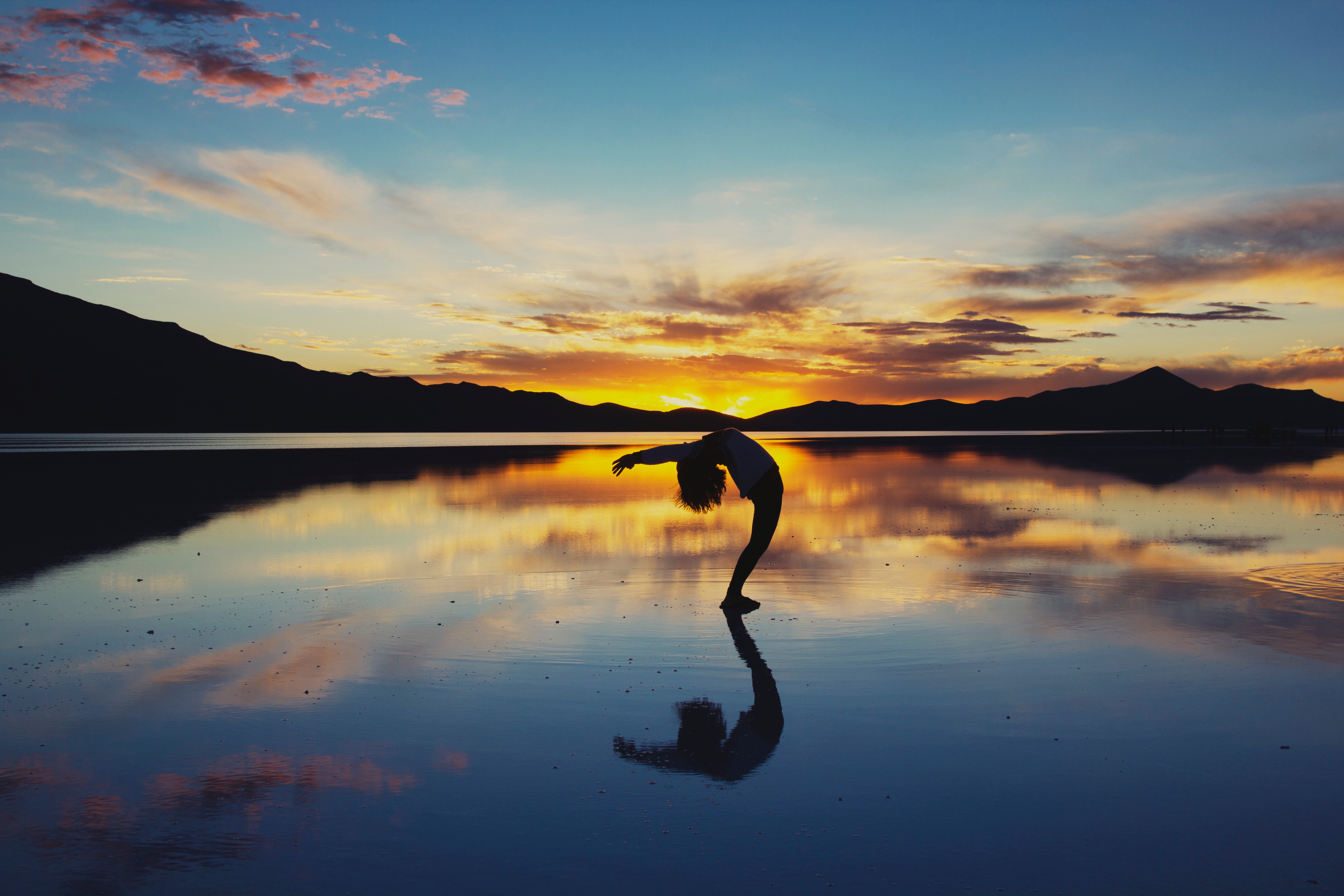I remember thinking people who did hot yoga were way too intense. I couldn’t imagine committing to an exercise routine like that once a week, let alone three times a week. I hated the heat. Loathed it. I hadn’t ever been able to sweat properly; I ended up perilously close to heat stroke on hot days in New York. Willingly exercise under conditions like that? Impossible. After all, I had fibromyalgia.
And then, I got the bad news that my spine was degenerating. An osteopathic physician told me that hot yoga could turn the degeneration around, but I needed to become a hot yogini. He said I was at the point of no return if I didn’t. I was losing sensation because the nerves in my back were pinched by spinal stenosis, so it didn’t feel like a choice to me. I could see that I’d end up being unable to stand and walk because of the pain if I did nothing, or else face a life full of back surgeries to chase the stenosis. I took my first hot yoga class later that day.
Because of the fibromyalgia, I had a harder time ramping up to speed than most newcomers. I would leave class and have to go lie down for four hours. I would be in a stupor, barely able to move, barely able to think. Fortunately, I was at a writing retreat, so I had six weeks to get acclimatized before heading home to my family. The first week I went to one class. Most of the time I was on my back in the hot room. Five days later, I went to class again and stayed upright through most of it. The following week, I went to two classes, upright for the first one and mostly lying down in the second. Again, every class meant four hours in bed at the retreat afterward. At first it felt like I was on fire in class, but fast forward three months and I was going to hot yoga three times a week and it didn’t seem as hot.
Here’s what I did to keep me on track:
I read The Success Principles by Jack Canfield, in which he states that researchers say we talk to ourselves 50,000 times a day, most of that self-talk is about ourselves and 80 percent is negative. I knew I wanted to transform my inner critic into an inner coach. His book helped me do that.
It helped me to have the mindset that it wasn’t possible to not go to hot yoga. I started redirecting my thoughts away from why I couldn’t do it or shouldn’t do it. Instead, I focused on what made me feel better about myself. If my ego needed soothing because everybody else was stronger or better at hot yoga, I’d remind myself that I’d just started. I’d pump myself up by telling myself that I could do it. I reminded myself how good it felt to pat myself on the back for going. I visualized myself going. I visualized myself strong and able to balance. I thought of this as my “Rocky” moment.
You might not have something as dramatic to push you into action as I did, but try connecting to who you want to be as a senior citizen. Do you want an energetic, healthy old age? Look at the seniors you pass on the street. The vital ones took steps by their forties and fifties to be that way. They still keep active most days to stay that way. Look at the ones who are in wheelchairs or using walkers. Their lack of action has led them to lose vitality. Not choosing is as much a decision as deciding to take action. What would your older self want you to choose to do today? I ask myself that every time I hesitate about going to class.
If you are older, it’s never too late to take the first step. I’ve seen amazing reversals of osteoporosis-related spinal curvature in senior citizens. The New York Post has a great article about this here.
This is the first in a two-part series. The second part will focus on how the knowledge of the neuroscience behind repetitive exercise, the benefits of high intensity aerobic exercise, neuropeptide release, and lymphatic circulation can help encourage the positive self-talk needed to continue exercise.
____________________________________________________________________________________
Elizabeth Gould is the author of Your Best Health by Friday: How to Overcome Anxiety, Depression, Stress, Trauma, PTSD, and Chronic Illness (Rincon Star Press, November 2017, available at lulu.com and amazon.com.) Elizabeth is the founder of Right Brain University. She lives in Santa Barbara, California.


